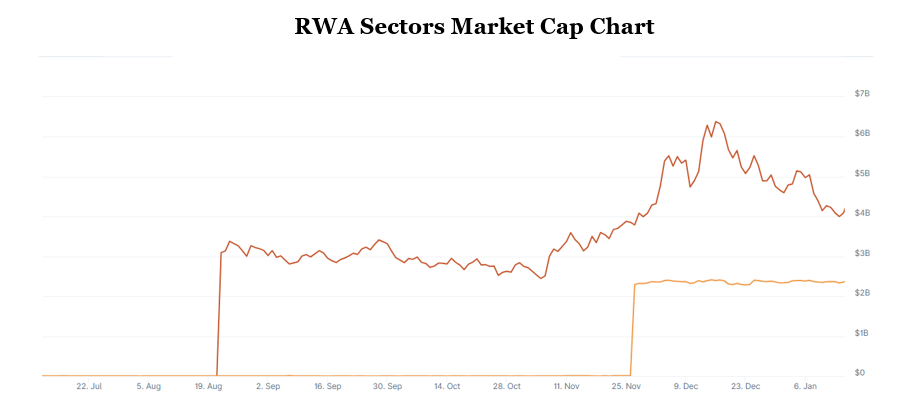Every few years, crypto discovers a new narrative that changes its direction from ICOs to DeFi Summer to NFTs and restaking. In 2025, that narrative could very well be Real World Assets (RWAs).
Tokenized treasuries, corporate debt and cash equivalents are migrating on chain, merging the stability of traditional finance with the flexibility of DeFi. And this time it isn’t just crypto native protocols driving the movement, it’s institutions like BlackRock.
What Are RWAs?
RWAs are off chain financial instruments such as bonds, commodities, currencies, or real estate that are represented digitally on a blockchain. They are typically custodied by regulated financial institutions and then “tokenized,” meaning ownership rights are issued in the form of blockchain based tokens. This model bridges traditional yield and on chain liquidity thus allowing assets like U.S Treasuries to be traded, collateralized or staked directly in DeFi protocols.
BlackRock’s BUIDL: Institutional DeFi Begins
When BlackRock launched its BUIDL (BlackRock USD Institutional Digital Liquidity Fund) on Ethereum, it marked the first major milestone in institutional on chain finance. BUIDL represents shares of a U.S. Treasury backed fund, fully compliant and custodied by BNY Mellon, but issued and transferable (restricted to whitelisted institutional wallets) as ERC-20 tokens on the same blockchain that powers most DeFi.
Institutions can now hold these tokens in wallets, move them instantly between counterparties, or even use them as collateral within DeFi protocols, bridging the gap between Wall Street liquidity and Ethereum based finance.
As of late 2024, BUIDL’s on chain AUM exceeded $500 million, proving that tokenized fixed income is no longer a concept it’s a live regulated product operating on Ethereum’s infrastructure.
USTB, sDAI, and the New Yield Layer
BlackRock isn’t alone. Ethena Finance’s USTB (tokenized U.S. Treasuries) and MakerDAO’s sDAI (yield bearing DAI backed by RWAs) have brought treasury yield directly to DeFi users. These tokens allow anyone to currently earn 4–5% annualized yield, derived from real world Treasury exposure, while keeping the composability of DeFi.
Why RWAs Matter
RWAs solve one of DeFi’s problems: the lack of real yield. Instead of relying on inflationary token incentives, RWA backed systems generate returns from real economic activity.
Key advantages include:
- Stable Yield: RWAs introduce predictable returns tied to government or corporate debt.
- Liquidity Efficiency: Tokenized assets can be traded or collateralized 24/7 without intermediaries.
- Transparency: On chain proof of reserves increases trust and auditability.
- Accessibility: Anyone with a crypto wallet can access yield instruments once reserved for institutions.
The Numbers Behind the Movement
The momentum behind RWAs is now clearly visible in on chain data. As shown in the chart below, the total market capitalization of RWA related tokens has surged throughout the past year—a direct reflection of growing institutional and DeFi participation in the tokenization sector.

In this chart, RWA Protocols (red line) represent projects building the infrastructure for tokenization while Tokenized Assets (orange line) refer to real world instruments like Treasury bills, corporate bonds, and cash equivalents issued on chain by platforms like BlackRock’s BUIDL.
By late 2024, combined RWA market capitalization exceeded $7 billion, driven primarily by the rising adoption of tokenized Treasuries and institutional liquidity inflows. Each major uptick in the graph aligns with new product launches and cross chain integrations.
Conclusion
RWAs are the bridge between crypto liquidity and traditional yield. We expect RWAs to become a core layer in DeFi over the next few years, attracting both institutional and retail capital.
In the same way stablecoins transformed payments, RWAs are set to transform the global investment landscape, bringing yield, trust, and access into a universal, permissionless world.